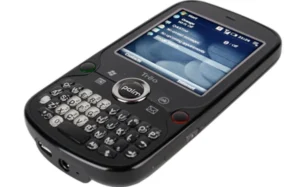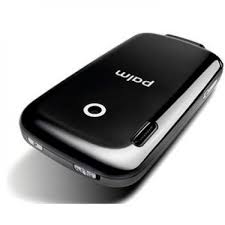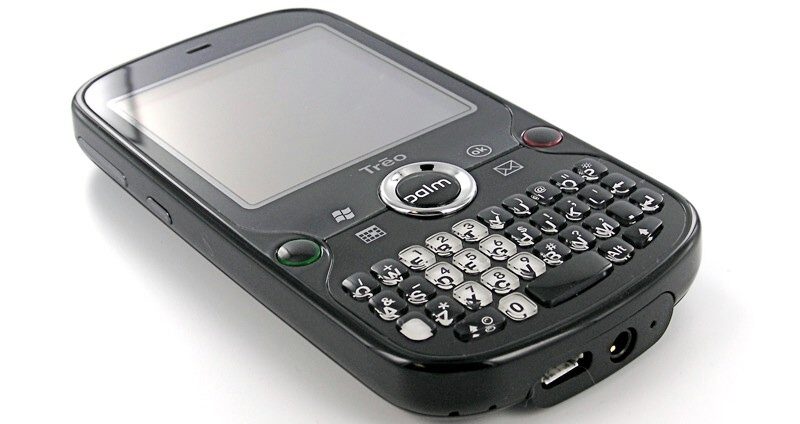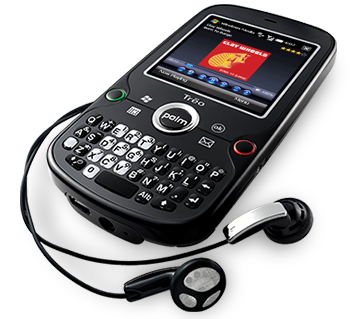Palm Treo Pro – A Detailed Review and Complete Guide | MTANDS
Advertisment
When we talk about the early days of smartphones, one name that always comes into the discussion is Palm. The company was a pioneer in creating compact, functional, and business-oriented mobile phones. Among its most iconic releases, the Palm Treo Pro stands out as a device that combined productivity, portability, and innovative design.
The Palm Treo Pro was officially released in 2008, and it quickly gained attention from business users and tech enthusiasts. It was designed for professionals who wanted a smartphone that could handle emails, calendars, multitasking, and internet browsing on the go. At that time, it was competing with devices like the BlackBerry Bold 9000, HTC Touch Pro, and iPhone 3G.
In this comprehensive article by MTANDS, we will explore every detail about the Palm Treo Pro – from its design, specifications, and software to its legacy and relevance in today’s tech world.
History of Palm Treo Pro
Palm was already known for its PDA (Personal Digital Assistant) devices in the late 1990s and early 2000s. With the Treo series, Palm decided to merge PDA features with mobile connectivity, creating one of the first smartphone categories.
-
The Palm Treo Pro was launched as a successor to the Treo 750.
-
It was powered by Windows Mobile 6.1 Professional.
-
Palm wanted to attract business executives who needed Microsoft Exchange, Outlook integration, and strong connectivity.
-
Its release marked one of Palm’s last big pushes before the smartphone market was dominated by iOS and Android.
 Design and Build Quality
Design and Build Quality
One of the strongest points of the Palm Treo Pro was its sleek design. Unlike bulky PDAs of the past, this phone looked modern and stylish for its time.
-
Dimensions: 114 x 60 x 13.5 mm
-
Weight: 133 grams
-
Build: Glossy black finish with a curved design
-
Keyboard: Full QWERTY keyboard at the bottom
-
Screen: 2.5-inch TFT touchscreen (320 x 320 pixels resolution)
The combination of a touchscreen and a physical keyboard made the device unique. It allowed users to type quickly while still enjoying touch navigation.
Display
Although small by today’s standards, the Palm Treo Pro’s 2.5-inch screen was sharp and functional.
-
Resolution: 320 x 320 pixels
-
Colors: 65K colors
-
Touchscreen: Resistive touchscreen (stylus support)
-
Brightness & Clarity: Sufficient for business use, emails, and web browsing
At the time, having a square-shaped display was unusual, but it helped in reading documents and emails effectively.
Hardware Specifications
The Treo Pro had a solid hardware foundation that made it a reliable smartphone for professionals.
-
Processor: Qualcomm MSM7201 400 MHz
-
RAM: 128 MB
-
Storage: 256 MB internal (expandable via microSD up to 16 GB)
-
Battery: 1500 mAh removable Li-Ion
-
Connectivity: 3G (HSDPA 850/1900/2100), Wi-Fi 802.11 b/g, Bluetooth 2.0, GPS
-
Ports: microUSB 2.0, 3.5mm audio jack
The inclusion of Wi-Fi and GPS was a huge plus at that time since not many smartphones had both.
Camera Features
The Palm Treo Pro had a 2 MP rear camera which was average by today’s standards but useful back then.
-
Resolution: 1600×1200 pixels
-
Video Recording: Yes (QVGA quality)
-
Flash: No
-
Front Camera: None
It was not marketed as a camera phone but rather a business smartphone, so photography was not its strong point.
Advertisment
Software and Operating System
One of the most important aspects of the Palm Treo Pro was its operating system:
-
OS: Windows Mobile 6.1 Professional
-
Interface: Touchscreen + QWERTY keyboard navigation
-
Email: Microsoft Exchange support, Outlook sync
-
Productivity Apps: Word, Excel, PowerPoint (via Microsoft Office Mobile)
-
Internet: Internet Explorer Mobile for browsing
At the time, having Office apps on your phone was revolutionary. Professionals could edit Word or Excel files directly on their device, making it a mini-computer in the pocket.
Performance and Multitasking
With its 400 MHz processor and 128 MB RAM, the Palm Treo Pro could handle multiple apps, but it was not as fast as modern smartphones.
-
Pros: Smooth email, calendar, and messaging experience
-
Cons: Limited gaming and media performance
-
Multitasking: Allowed switching between apps, but too many apps slowed it down
For business tasks, it was highly reliable.
Connectivity and Communication
The Palm Treo Pro excelled in connectivity, which was its biggest strength.
-
Phone Calls: Clear and stable
-
Messaging: SMS, MMS, and email with push support
-
Internet: 3G browsing with Internet Explorer Mobile
-
Wi-Fi: Great for offices and home internet use
-
Bluetooth: File sharing and wireless headset support
-
GPS: Turn-by-turn navigation with mapping software
Battery Life
The 1500 mAh battery provided:
-
Talk time: Up to 5 hours
-
Standby time: Around 250 hours
-
Usage: One full day with moderate use
It had a removable battery, so users could carry an extra one if needed.
Advertisment

Advertisment
Palm Treo Pro vs. Competitors
When it was released, the Palm Treo Pro faced stiff competition from other smartphones.
-
BlackBerry Bold 9000 – Better email integration, but bulkier.
-
HTC Touch Pro – Sleek design with a sliding keyboard.
-
Apple iPhone 3G – More stylish and app-friendly but lacked a physical keyboard.
Palm Treo Pro was a middle ground – offering the best of both worlds: touchscreen and keyboard, plus strong productivity tools.
Strengths of Palm Treo Pro
-
Sleek and professional design
-
Full QWERTY keyboard for fast typing
-
Microsoft Office support
-
Wi-Fi, GPS, and 3G connectivity
-
Expandable storage
Weaknesses of Palm Treo Pro
-
Average camera performance
-
Limited app ecosystem compared to iPhone
-
Resistive touchscreen instead of capacitive
-
Slower performance with heavy multitasking
Legacy and Impact
The Palm Treo Pro represented the last great phase of Palm’s smartphone innovation. Shortly after, Palm released the Palm Pre with webOS, but it was too late to compete against iOS and Android.
Today, the Treo Pro is remembered as a classic business smartphone that played an important role in shaping the modern mobile industry.
 Relevance in Today’s World
Relevance in Today’s World
While outdated in terms of performance, the Palm Treo Pro is still:
-
A collectible item for mobile phone enthusiasts
-
A reminder of the early smartphone era
-
An example of how far mobile technology has evolved
Some tech lovers still buy it as a retro device.
Conclusion
The Palm Treo Pro was not just a phone – it was a statement. For professionals in the late 2000s, it was one of the most reliable and productive smartphones available. It bridged the gap between PDAs and modern smartphones, offering a powerful set of tools in a compact device.
On MTANDS, we believe that learning about classic devices like the Palm Treo Pro helps us appreciate the incredible journey of smartphones. From small screens and physical keyboards to today’s powerful AI-driven devices, the progress is fascinating.
The Palm Treo Pro will always remain a symbol of Palm’s innovation and an important chapter in mobile phone history.

